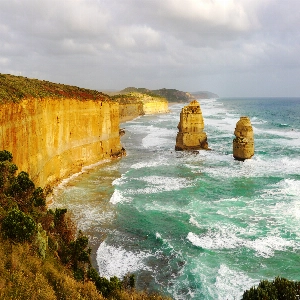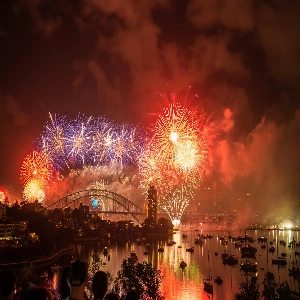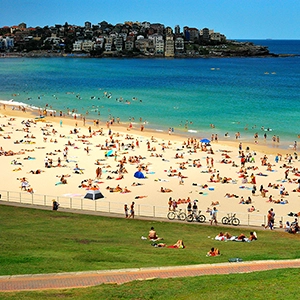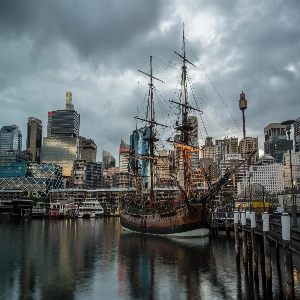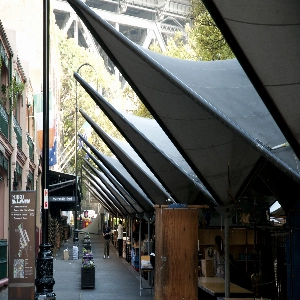Sydney Opera House
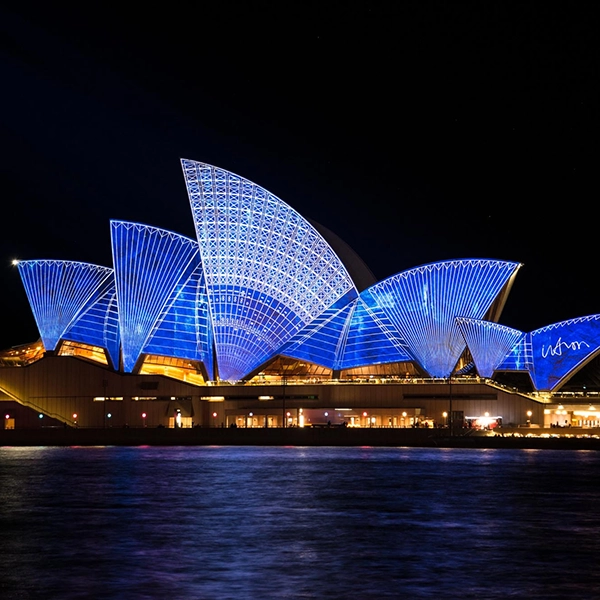
Introduction to Sydney Opera House
The Sydney Opera House is one of the most iconic landmarks in the world, and a symbol of Australia's cultural and architectural prowess. Situated on the picturesque Sydney Harbour, this iconic piece of modernist architecture attracts millions of visitors every year, making it one of the busiest performing arts centers in the world. Designed by Danish architect, Jørn Utzon, and completed in 1973, the building features a unique design with its series of sail-like roofs that seem to float above the harbour waters. Apart from its architectural beauty, the Sydney Opera House is also an important cultural destination, hosting hundreds of performances and events every year.
Design and Construction
The design of the Sydney Opera House came about through an international design competition held in 1956, which received over 230 entries from architects all over the world. Jørn Utzon's design was selected as the winning entry, primarily due to its imaginative and innovative use of space and form, as well as its striking appearance. Construction of the Sydney Opera House began in 1959, and due to the complex nature of the design, the project encountered numerous engineering and technical challenges. This led to frustrating delays, escalating costs, and mounting public criticism. Ultimately, Utzon resigned from the project in 1966, and Australian architects Peter Hall, Lionel Todd, and David Littlemore took over the design and construction supervision. Despite the numerous setbacks, the building was finally completed in 1973 and officially opened by Queen Elizabeth II on October 20 of the same year.
Architecture and Design Features
One of the most distinctive features of the Sydney Opera House is its sail-like roof structure, which is composed of 2,194 precast concrete panels, each weighing between 2 and 20 tons. These panels were manufactured on-site and are covered with over one million tiles in a chevron pattern, which contributes to the unique appearance of the building. The roof structure is supported by 1,056 large precast concrete ribs, which in turn rest on massive columns that penetrate deep into the ground to provide stability. The Roof was originally designed to resemble a series of interconnected shells that would collectively form a single, unified structure. This design concept, however, proved to be unfeasible due to engineering constraints, and a more simplified geometric solution was adopted. The result is a series of overlapping arches that create the impression of interlocking shells. The Sydney Opera House consists of multiple performance spaces, the largest of which is the Concert Hall, with a seating capacity of over 2,600. The other main performance venue is the Joan Sutherland Theatre, which can accommodate up to 1,500 spectators. Beyond these two primary spaces, the building also houses multiple smaller performance spaces, a recording studio, cafes, and expansive outdoor areas that provide stunning views of the harbour. The interior design of the Sydney Opera House is a blend of modernist and traditional elements that aim to create a welcoming and inspiring environment for both performers and audiences. The use of natural materials like wood, stone, and concrete helps to create a sense of warmth and intimacy, while the extensive use of glass allows for ample natural light to flow into the spaces. Over the years, several renovations and upgrades have been carried out to ensure that the building's facilities remain up-to-date and meet the demands of modern performance and production techniques.
Performances and Events
As a performing arts center, the Sydney Opera House offers a diverse range of events and performances, catering to both local and international audiences. The resident companies of the Opera House include Opera Australia, The Australian Ballet, Sydney Symphony Orchestra, and Sydney Theatre Company, which together present hundreds of performances every year, spanning different disciplines like opera, ballet, classical music, and theater. In addition to the resident companies, the Sydney Opera House also hosts numerous festivals and special events throughout the year. Some of the most notable events include Vivid Sydney, a yearly festival of light, music, and ideas; Sydney Festival, a multi-arts festival held in January; and the TedxSydney event, which showcases talks and performances by notable Australian and international personalities. One of the primary aims of the Sydney Opera House is to engage with a diverse range of audiences, and as such, it also hosts numerous educational and community-based events, as well as offering guided tours that provide a behind-the-scenes look at the iconic building.
Legacy and Recognition
The Sydney Opera House is considered one of the most significant examples of modern architecture in the world and has come to symbolize the innovative and creative spirit of Australia. In recognition of its architectural and cultural significance, the Sydney Opera House was designated as a UNESCO World Heritage Site in 2007, further cementing its status as a global architectural icon. Apart from its architectural and cultural accolades, the Sydney Opera House is also seen as a symbol of national pride and unity, overcoming the various challenges and controversies that marred its construction. Ultimately, the completion of the Sydney Opera House reflects the resilience, determination, and vision of the numerous people involved in its creation, and serves as a testament to the power of art and architecture to inspire and bring people together.


